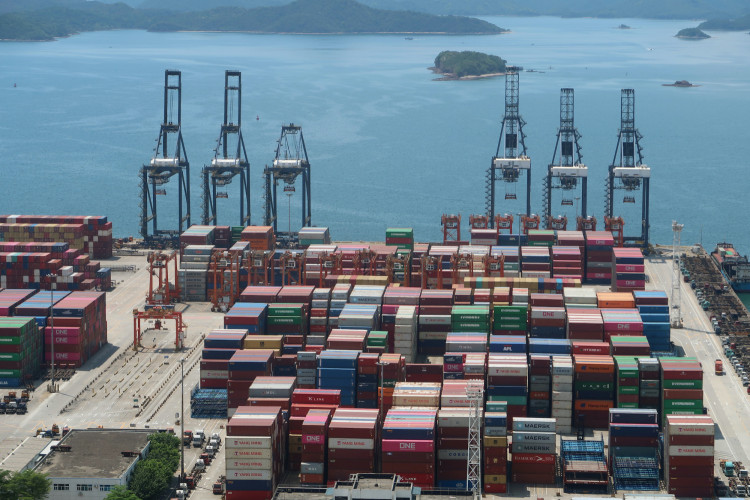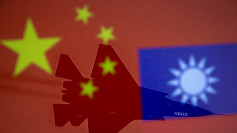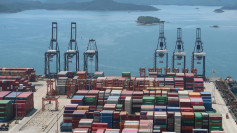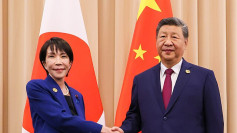The Chinese Communist Party has started drafting its 14th five-year plan, which will set economic and political goals for 2021 to 2025, but the party's leadership may be at a crossroads as to which way China turns economically.
With the coronavirus pandemic triggering worldwide uncertainties, President Xi Jinping said at a seminar this week with a group of policy advisers and state economists that it was time for closer ties with the global economy, sending a clear message that China wants to cooperate with all regions and businesses, "including states, localities and enterprises in the United States."
Xi's exhortation was, presumably, a thinly veiled message that it wants to bypass doing any business with the U.S. government in favor of friendlier American entities.
But in May his year, in response to the coronavirus crisis, Xi introduced the concept of a "dual circulation" economic model. This new strategy calls for the country to continue to expand domestic production for exports - or "international circulation" - but emphasizes instead production for domestic consumption - or "internal circulation."
Besides seemingly running counter to Xi's statements this week, one China expert sees a major problem with the "dual circulation" model.
Peking University finance professor Michael Pettis told the Financial Times "the shifting from international circulation to internal circulation requires an economic, social and political transformation which is not just happening in the short term."
China's 2019 private consumption accounted for 38.8 percent of its GDP compared with 38.7 percent in 2018 - an insignificant change, according to international economic-information company CEIC Data. This is less than other heavily populated countries like the U.S. at 66.9 percent, India with 59.5 percent, Indonesia's 59.2 percent and Brazil's 64.4 percent, CEIC said.
The New Troika: Technology, Health Care And Education
As China repositions itself economically, the industries leading the charge are technology, health care and education.
Alibaba unit Ant Financial - the world's highest-valued financial technology company at $150 billion - has 1 billion Alipay users and big profit margins. But competitors Huawei and Tencent's WeChat are suffering. Nevertheless, no one can deny the potential of China's tech players - especially those in incubation. In 2019 China had 206 unicorns - topping the Global Unicorn List published by Hurun in December. China and the U.S. are locked in a race to lead technology such as artificial intelligence and cloud computing.
Elsewhere, health expenditures in China will rise to 6.2 trillion yuan this year thanks to its aging population, urbanization, growth in individual wealth and the increase in state and private medical insurance, according to a Deloitte report. This compares with 3.2 trillion yuan in 2013, or 5.6 percent of GDP.
Deloitte said in another report that China's education market was expected to grow to 2.9 trillion yuan this year from 1.6 trillion yuan in 2015.
"China has experienced an extremely turbulent first half of 2020 and we expect a recovery in the second half driven by pent-up demand and countercyclical adjustments," Atlantis Investment fund manager Yan Yang says. "Technology and health care sectors became star performers in the midst of the pandemic and that can continue to be the main theme in the second half as these sectors are defensive in an uncertain environment."
Opening Up And Reform With Selective Partners
As far back as 2013 China had clear thinking about its position in the world with the launch of One Belt One Road Initiative - a plan to spend on infrastructure in nearly 70 countries. Since then more countries have shown an interest.
In March last year, Italy became the first developed economy to sign up to the initiative. Twenty-nine deals valued at 2.5 billion euros were signed during President Xi's visit to Rome.
Companies are also on the way. Take Chinese smartphone maker Xiaomi and its competitors VIVO and OPPO: they have been paving the way for markets outside China for years. For the three months ending in June, Xiaomi controlled 29.4 percent of the market in India with 5.4 million shipments - down a little year over year but still a dominant position, according to its exchange filings. For Huawei, Europe, the Middle East and Africa and China itself contributed approximately 81 percent of revenue in 2019.
The southern city of Shenzhen - a landmark of the country's changes - recently celebrated 40 years of its special economic zone. It has embraced "opening up" and helped per-capita gross domestic product rise to 203,000 yuan in 2019 from 606 yuan in 1979.
As economic changes revert to internal forces - and away from marketization and internationalization as a result of the virus - experts see the Guangdong-Hong Kong- Macao Greater Bay Area as a potential game changer.






